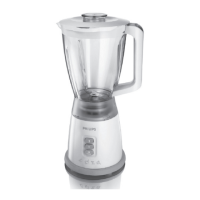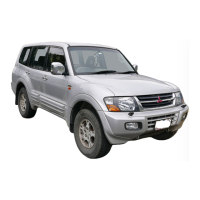2D-16 Chapter 2 Part D General engine overhaul procedures
9.18 Check each valve spring for 11.4 Make sure the valve stem seals 11.6 Apply a small dab of grease to
squareness
are installed evenly and carefully to each keeper as shown here before
avoid damage installation - it’ll hold them in place on
the valve stem as the spring Is released
tlon).
Any springs that are shorter than specified have sagged and
shouldn’t be reused. The tension of all springs should be checked with a
special fixture before deciding they’re suitable for use in a rebuilt engine
(take the springs to an automotive machine shop for this check).
18 Stand each spring on a fiat surface and check it for squareness (see
illustration).
If any of the springs are distorted or sagged, replace all of
them with new parts.
19 Check the spring retainers and keepers for obvious wear and cracks.
Any questionable parts should be replaced with new ones, as extensive
damage will occur if they fail during engine operation.
20 If the inspection process indicates the valve components are in gen-
erally poor condition and worn beyond the limits specified, which is usually
the case in an engine that’s being overhauled, reassemble the valves in
the cylinder head and refer to Section 11 for valve servicing recommenda-
tions.
10 Valves - servicing
1 Because of the complex nature of the job and the special tools and
equipment needed, servicing of the valves, the valve seats and the valve
guides, commonly known asavalve job, should bedone by a professional.
2 The home mechanic can remove and disassemble the head, do ihe
initial cleaning and inspection, then reassemble and deliver it to a dealer
service department or an automotive machine shop for the actual service
work. Doing the inspection will enable you to see what condition the head
and valvetrain components are in and will ensure that you know what work
and new parts are required when dealing with an automotive machine
shop.
3 The dealer service department, or automotive machine shop, will re-
move the valves and springs, recondition or replace the valves and valve
seats, recondition the valve guides, check and replace the valve springs,
rotators, spring retainers and keepers (as necessary), replace the valve
seals with new ones, reassemble the valve components and make sure
the installed spring height is correct. The cylinder head gasket surface will
also be resurfaced if its warped.
4 Afterthevalvejobhasbeenperformedbyaprofessional,theheadwill
be in like new condition. When the head is returned, be sure to clean it
again before installation on the engine to remove any metal particles and
abrasive grit that may still be present from the valve service or head resur-
facing operations. Use compressed air, if available, to blow out all the oil
holes and passages.
11 Cylinder head - reassembly
Referfoillusfrafions 11.4, 17.6, 17.8, 11.9and 11.12
1 Regardless of whether or not the head was sent to an automotive re-
pair shop for valve servicing, make sure its clean before beginning reas-
sembly.
2 If the head was sent out for valve servicing, the valves and related
componentswill already be in place. Begin the reassembly procedure with
Step 8.
3 Install the spring seats or valve rotators (if equipped) before thevalve
seals.
4 Install new seals on each of the valve guides. Using a hammer anda
deepsocket or seal installation tool, gently tap each seal into place until it’s
completely seated on the guide (see
Illustration).
Don’t twist or cock the
seals during installation or they won’t seal properly on the valve stems.
5 Beginning at one end of the head, lubricate and instafl the first valve.
Apply moly-base grease or clean engine oil to the valve stem.
6 Position the valve springs (and shims, if used) over the valves. Com-
press the springs with avalve spring compressor and carefully install the
keepers in the groove, then slowly release the compressor and make sure
the keepers seat properly. Apply a small dab of grease to each keeper to
hold it in place if necessary
(see illustration).
7 Repeat the procedure for the remaining valves. Be sure to return the
components to their original locations - don’t mix them up!
8 Check the installed valve spring height with a ruler graduated in
1/3Binch increments or a dial caliper. If the head was sent out for service
work, the installed height should be correct (but don’t automatically as-
sume it is). The measurement is taken from the top of each spring seat to
the bottom of the retainer
(see illustration).
If the height is greater than
listed in this Chapter’s Specifications, shims can be added under the
springs to correct it.
Caution:
Do not, underanycircumsfances, shim the
.-
11.8 Be sure to check the valve spring installed height (the
distance from the top of the seat/shims to the top of the spring)

